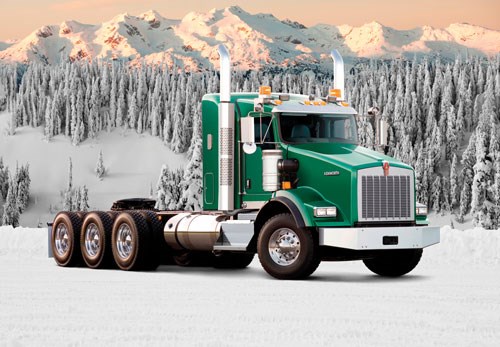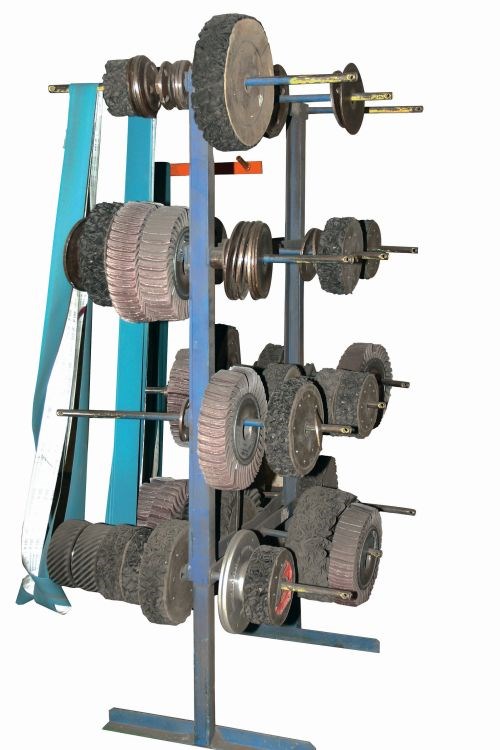Mechanical Finishing to Enhance Plating Operations
Combination swing-frame grinder cuts production time at Lincoln Industries.
Lincoln Industries continues to optimize its vertical integration of tube bending, polishing and plating in order to better serve its customers.
A family-owned business founded more than 60 years ago, the company has more than 600 employees in Lincoln, Nebraska, and provides a comprehensive range of manufacturing and engineering services for products that require high-performance metal finishing.
Featured Content
Among Lincoln’s primary products are chrome-plated exhaust stacks for major heavy-duty truck manufacturers and the aftermarket truck industry under the Lincoln Chrome brand. To make the exhaust stacks, the company starts with welded steel or stainless steel tubing in sizes ranging from 5-inch to 8-inch OD, and lengths from 24 to 120 inches. These are formed and bent to the configurations seen on heavy-duty trucks across the country. Before they can be plated, the longitudinal welds and any surface imperfections must be polished.

Kentworth trucks sport the shiny stacks.
“The plated finish is directly proportional to the condition of the base metal,” says Eric Rempel, a Lincoln controls engineer. “A scratch or ding will show right through it.”
To improve its polishing operation, Lincoln consulted with Grinding & Polishing Machinery Corp. of Indianapolis, a specialist in designing and building industrial grinding and polishing machinery. G&P, which had supplied polishing equipment to the company previously, worked with Rempel and Process Specialist Jason Eickhoff at Lincoln to design and build a new machine component that would make their polishing process more efficient and reduce production cycle times.

Chrome-plated exhaust stacks and truck accessories are a major Lincoln Industries product. Above:Stacks are polished and chromed at their Nebraska plant.
The machine uses a single driving mechanism to drive two heads: a belt grinder and a buffing wheel. The simple but effective concept uses the grinding belt to drive the buffing wheel, which is mounted at the opposite end of the same shaft as the belt’s contact wheel. The entire grinding mechanism is built on a swing frame that allows the operator to control the positioning and pressure of whichever grinding head is being used. It also lets the operator pivot the unit to change a belt when necessary. The machine’s control bar is adjustable to accommodate operators of different heights for better ergonomics.
Framework Design
To complete the machine, Lincoln Industries had a framework designed and built locally to suspend the grinding unit and position the part being polished.
Rempel designed controls that enable the operator to select from a range of parameters, including tube diameter, bed and belt speeds and many other variables. When changing from one head to another, the operator simply selects a setting for either belt or flap wheel on the control panel. A pneumatic cylinder then positions the appropriate G&P head over the workpiece and the controls set the variable speed drive motor to the proper speed.
Once a part is mounted in position, the belt is started and the travel cycle begins. At the end of the travel, the operator indexes the part and repeats the process, continuing around the part diameter in this manner. He then selects the flap wheel setting and the machine resets to the proper position and speed, after which the polishing process is repeated using the wheel.

Above, a combination buffer/abrasive belt grinder reduced the time to polish truck exhaust stacks before plating by more than 40 percent at Lincoln Industries.
Operator skill is an important part of the process, because the polished steel or stainless steel must be as flawless as possible before plating. Rempel says that the machine’s programmed capabilities are enhanced with skilled hand-eye coordination by the operator to achieve superior results. For example, if the operator sees a flaw in the part, he can make multiple passes with the abrasive belt or wheel instead of indexing the part for the next pass. This ensures all parts meet Lincoln Industries’ and the OEM’s high standards of finish.
“Now we can run the same part through both operations with one setup, which reduces the possibility of handling damage,” Rempel says. “Having fewer handling operations also helps prevent repetitive motion injuries for the operator.”
For information on Lincoln Industries, visit lincolnindustries.com; for information on Grinding & Polishing Machinery Corp., visit gandpmachineryin.com.
Originally published in the December 2015 issue.
RELATED CONTENT
-
Smut and Desmutting
Question: I am new to this industry and have heard about smut and desmutting operations.
-
Aluminum Anodizing
Types of anodizing, processes, equipment selection and tank construction.
-
An Overview of Electroless Nickel Plating
By definition, electroless plating is metal deposition by a controlled chemical reaction.



















